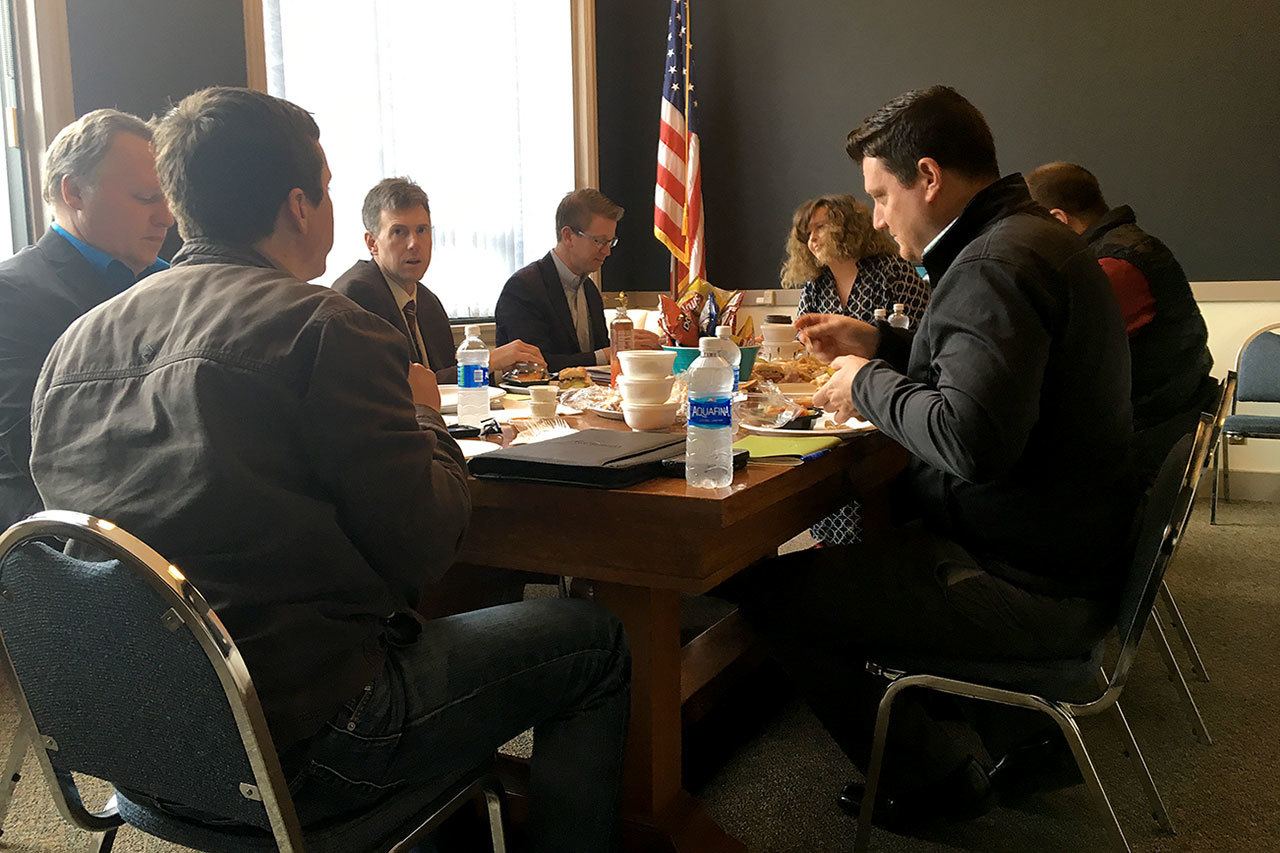Congressman Derek Kilmer stopped by Hoquiam City Hall on Wednesday to meet with city officials from Aberdeen and Hoquiam for an update on the TimberWorks flood relief plan.
The plan addresses flooding problems in both cities, and the cities now have a comprehensive plan in place that includes new and improved pump stations, improvements to existing drainage systems, increased stormwater storage and – the key component – the North Shore Levee, which will stretch from the East Hoquiam River in the west to the Wishkah River in the east.
The plan, with a price tag in the area of $50 million, now awaits funding for most of its components. Hoquiam City Administrator Brian Shay told Kilmer some parts, like the new Ramer Street Pump Station and improving the drainage pipe system on Simpson Avenue, are funded and preparing for construction, but the big ticket item — the levee — will need some federal money to push it along.
The congressman described the current situation in Washington, D.C. “There is a lot of uncertainty.” However, the new administration has pledged money for a new infrastructure package, but has not yet produced a budget for consideration and has not given a timeline to do so.
“I have reached out to the new administration about an infrastructure package, saying don’t just focus on roads,” said Kilmer. “There are these other kinds of projects that can drive economic development and create jobs.”
Flooding problems have driven flood insurance premiums up and property values down, according to Shay. Home and business owners in the community, collectively are paying nearly $3 million annually in premiums and have seen only a fraction come back in claims. “I heard from people after the 2015 flood and was told their (flood insurance) claims were not paid because they were told the damage was caused by mud, not floods,” said Hoquiam Mayor Jasmine Dickhoff. The flood risk has hurt the local economy by discouraging businesses to locate to the area. Because of all of these factors, Mayor Dickhoff told Kilmer, “There is no bigger economic priority here than building the levee.”
Kilmer asked if increased storage capacity for stormwater alone would provide economic relief. Aberdeen City Engineer Kris Koski replied that the levee is the only component of the plan that would guarantee getting the cities above the 100-year flood plain established by the federal government, which would end the requirement for flood insurance for many properties.
Mayor Dickhoff and Shay said federal assistance is needed to move the project along, but added the people of both cities understand the economic and long-term importance of the plan and have been open to paying to help it along. The cities’ dedication to the plan, public support for it, a clear economic benefit to the plan, and the fact there is indeed a final plan in place could help with funding, said Kilmer. “I commend you for doing the hard work,” he added. Mayor Dickhoff commended the people at the table and said it is because of their dedication, “this is probably the most publicly supported project this area’s seen in 10 years.”
Koski added if funding can be secured, construction could conceivably begin as early as late 2018, more likely in early 2019. Kilmer said, “I will help navigate and support you through every grant application. I want to see this happen and will do everything I can to support it.”



